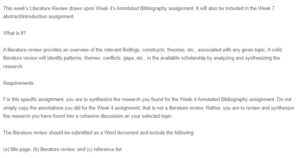Literature Review – Corporal Punishment
This section of the research will evaluate different findings that other researchers have established on the issue of corporal punishment at home or in school. To begin with, the main question regarding whether corporal punishment is a form of abuse or discipline lingers. According to (Bassam et al., 2018), corporal punishment is quite common worldwide. Consequently, some children die from corporal punishment, while others are predisposed to other mental and physical conditions. The study sought to establish the knowledge that pediatricians have regarding corporal punishment in Lebanon (Bassam et al., 2018). The findings established that only half of the responding pediatricians were conversant with the negative effects of physical punishment on children. In addition, this study’s findings highlight the difficulty of illegalizing physical punishment as a form of abuse. The level of ignorance among health professionals who are expected to cater to children’s well-being is astonishing. This explains the widespread nature of physical punishment in Lebanon and significant tolerance in other nations as well.
The USA is not an exception among nations with a high prevalence of physical punishment towards children. It is difficult to understand the reasons that propel this type of violence in an era where human rights are aggressively advocated for. According to Miller-Perrin and Perrin (2018), physical punishment harms children significantly and is therefore discouraged. Professionals and parents are encouraged to act in manners that ensure children’s rights and welfare are observed and respected. The authors suggest the need for creating awareness among parents regarding the dangers of physical punishment. In agreement with Bassam et al.’s (2018) findings, the authors propose the education of professionals on the same issue because they are likely to encounter and influence parents’ behaviors. Such education and awareness are deemed important for changing the positive attitudes towards physical punishment in various cultures. Finally, advocacy through legal platforms is highly suggested as one of the mitigations of the currently widespread issues of physical punishment among children.
Akhtar, Abdul, and Awan (2018) established that physical punishment in schools affects learners’ mental and emotional well-being. These consequences affect their cognitive functions, leading to poor performance. Learners who experience physical punishment tend to have unruly, aggressive behaviors and are distant from their instructors. Besides, they miss school and engage in reckless behaviors that negatively affect their future. Considering these negative effects on learners, it is advisable that teachers use alternative methods to discipline students. However, this change can only occur if the teachers are educated on the negative effects.
Alla’s (2021) review of other studies’ findings highlights similar negative effects of physical punishment and the high prevalence of abuse. Accordingly, children exposed to physical punishment suffer from low self-esteem, antisocial behaviors, and low cognitive capabilities due to poor brain development, physical injuries, and negative interactions with their guardians or parents. In addition, in their adulthood, they are likely to use physical violence on their children and romantic partners as well. In worse situations, adults suffer from depression, drug abuse, and anxiety. These studies’ findings are in line with Cuartas, Weissman, and Sheridan’s (2021) study’s conclusions that increased brain activity among spanked children. Similar brain activity was viewed when the children were exposed to fearful faces. The children’s responses to environmental threats were similar to the different forms of maltreatment. These studies unanimously establish that physical punishment negatively affects children’s development, performance, and interactions both in their adulthood and children phases.
References
Akhtar, S. I., Abdul, G., & Awan, A. G. (2018). The Impact Of Corporal Punishment On Students’ Performance In Public Schools. Global Journal of Management, Social Sciences and Humanities, 4(3), 606-621.
Alla, K. (2021, August). What does the evidence tell us about physical punishment of children? Retrieved from Australian Institute of family Studies: https://aifs.gov.au/cfca/2021/08/18/what-does-evidence-tell-us-about-physical-punishment-children
Bassam, E., Marianne, T. B., Rabbaa, L. K., & Gerbaka, B. (2018). Corporal punishment of children: discipline or abuse? Libyan Journal of Medicine, 13(1).
Cuartas, J., Weissman, D. G., & Sheridan, M. A. (2021). Corporal Punishment and Elevated Neural Response to Threat in Children. Child Development, 821-832. doi:https://doi.org/10.1111/cdev.13565
Miller-Perrin, C., & Perrin , R. (2018). Physical punishment of children by US parents: moving beyond debate to promote children’s health and wellbeing. Psicologia: Reflexão e Crítica, 31(16).
ORDER A PLAGIARISM-FREE PAPER HERE
We’ll write everything from scratch
Question 
This week’s Literature Review draws upon Week 4’s Annotated Bibliography assignment. It will also be included in the Week 7 abstract/introduction assignment.

Literature Review – Corporal Punishment
What is it?
A literature review provides an overview of the relevant findings, constructs, theories, etc., associated with any given topic. A solid literature review will identify patterns, themes, conflicts, gaps, etc., in the available scholarship by analyzing and synthesizing the research.
Requirements
For this specific assignment, you are to synthesize the research you found for the Week 4 Annotated Bibliography assignment. Do not simply copy the annotations you did for the Week 4 assignment; that is not a literature review. Rather, you are to review and synthesize the research you have found into a cohesive discussion on your selected topic.
The literature review should be submitted as a Word document and include the following:
(a) title page, (b) literature review, and (c) reference list.